Censors came a few hours before openings...
author
Ion Grigorescu
A truly independent and eccentric artist, Ion Grigorescu is well-known for a series of artistic experiments undertook in the 1970s employing formats like photography, video, and performance. These include a film of Bucharest after the 1977 earthquake, an imaginary filmed interview with Ceausescu in which the artist plays the interviewer and the interviewee, and sketches for a triptych of Ceausescu that was commissioned in 1980 and subsequently destroyed. Grigorescu's "politically incorrect" pieces of art, which criticized the regime’s hypocrisy, were banned by censors in the early 1980s. Ion then began restoring churches in the countryside, staying away from political life until the 1990s, when the borders were opened and he was able to exhibit in Rumania and abroad once again.
Postcard
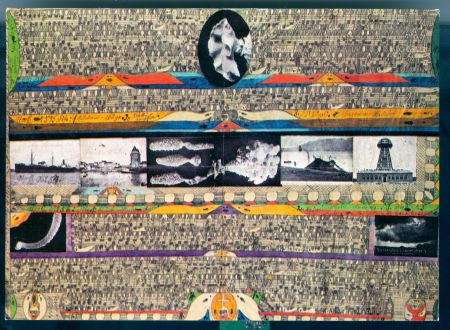
- Laboratorium of Long Island
- Laboratorium of Long Island is a collage by the Swiss artist Adolf Wölfli. Wölfli was one of the first artists to be associated with the "Art Brut," or "Outsider Art" label, i.e. art created outside the boundaries of official culture, an art that illustrates extreme mental states, unconventional ideas, or elaborate fantasy worlds.
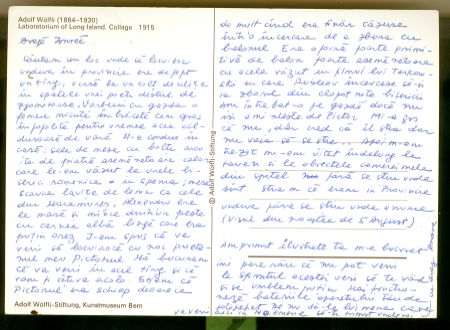
- Postcard Text
- Dear Ionica, I was looking for a place to stay, apparently it was a fair. A house on the corner of the street, behind a very noisy marketplace. I was talking with the landlady, a tiny woman, rather muffled for that sunny day. She guided me through the house: the lunch hall had some curved arches similar to the ones from Spanish Roman Churches; tables, chairs and benches were in the Maramures style. Alexandru was sitting at the table and eating fish with rice. I told him that my friend, the Painter, was coming to live with us. I was happy about his arrival and that we'd be more a part of the village. I knew he was lame in one leg as he'd had an accident early in life, while trying to fly in a balloon. It was a rather primitive balloon, like the one from Tarkovsky's film, the one Rubliov used to fly from the bell tower. I asked the landlady if she remembered the Painter, but she denied. I think she just didn't want to admit it that she did... Then I woke up and stared at the ceiling, at the objects in my hospital room, without knowing where I was. I only knew that it was Provence. (My dream from the night of 5th of August) The postcard you sent delighted me. I'm sorry I can't come over at the end of this summer. Are the batteries in your camera still working? If not, give them to my mother, who is coming here in November. I'll send you more. Love, Andrei
personal archives
An electoral meeting
A photo taken by Ion Grigorescu during an electoral gathering in 1975
country: People’s Republic of Romania / year:
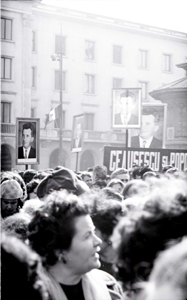
Ion Grigorescu’s photo of an electoral meeting in 1975. In the early 70s, after a period of relative intellectual freedom, indoctrination of the masses and the cult of personality were firmly reasserted. People had to attend political information meetings, and once there, they were obliged to take notes, pay attention and address the gathering.
Triple Portrait of Ceausescu
Triple portrait of Ceausescu painted by Grigorescu following a Party order.
country: People’s Republic of Romania / year:
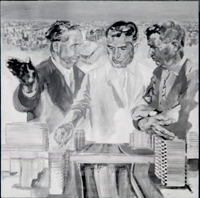
Triple portrait of Ceausescu painted by Grigorescu on an order from the Party. Grigorescu painted Ceausescu in a superficially patriotic way, using the three colours of the Rumanian flag red, yellow and blue for the three Ceausescu figures. But his critical view of the President is obvious. Ceausescu is portrayed as an indecisive person who cannot even make up his mind about a building project. In the end, "The Triple Portrait" was refused by the Commission.
Painting class
Teaching painting at the Pioneers’ Palace
country: People’s Republic of Romania / year:
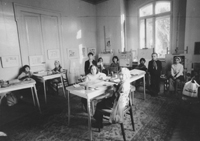
Teaching painting at the Pioneers’ Palace. The Cotroceni Palace was the official residence of the President. Under Ceausescu's rule it was used as the "Pioneer's Palace", a youth centre designated for creative work, sport training and extracurricular activities for Communist youth.
Gas shortage
Queue for gas, Craiova
country: People’s Republic of Romania / year:
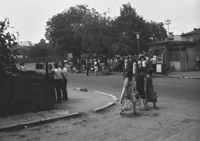
Queue for gas, Craiova. Although his works were banned from public view in 1982, Grigorescu decided not to emigrate in the West as many of his friends did: "I was asked, but I said I didn’t want to, because I believed that I could achieve my goals as an artist here – just as I had done before ’77... While over there, I would have lacked my raw material, I mean the reality that was inspiring me."
Self portrait
Grigorescu in his chamber at Olanesti
country: People’s Republic of Romania / year:
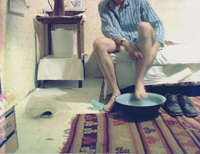
Grigorescu in his chamber at Olanesti. Grigorescu made his debut in the early 70s. His works dealt mainly with history and contemporary life, using documents, especially photographs, as his starting point: “Their reality could not be denied as such. They were disturbing because reality was the way it was: ugly and not prettified.”